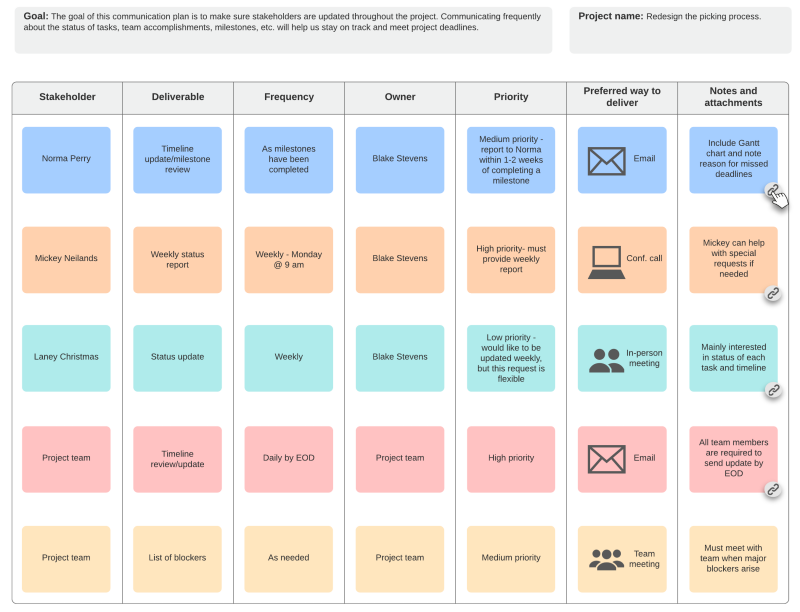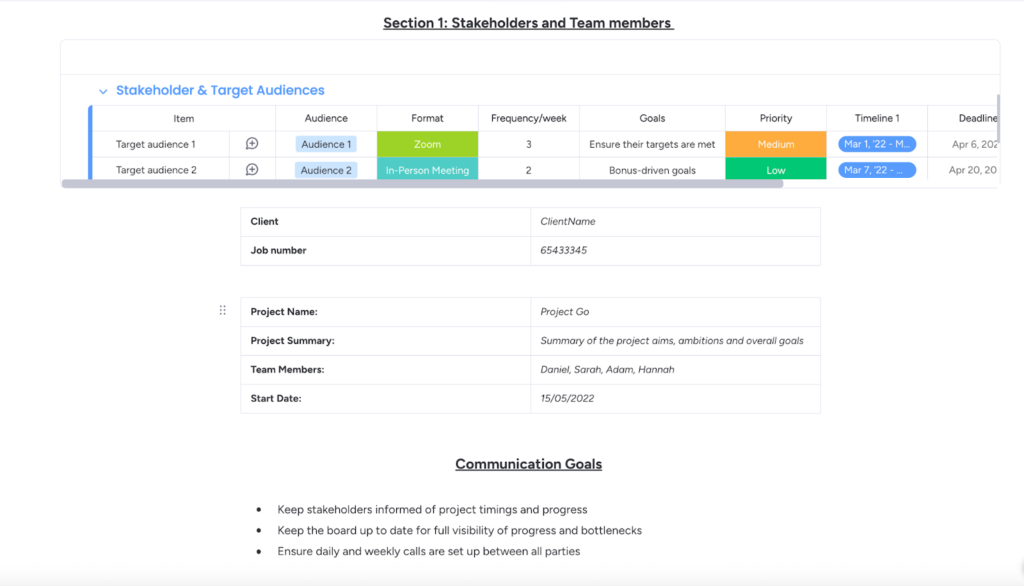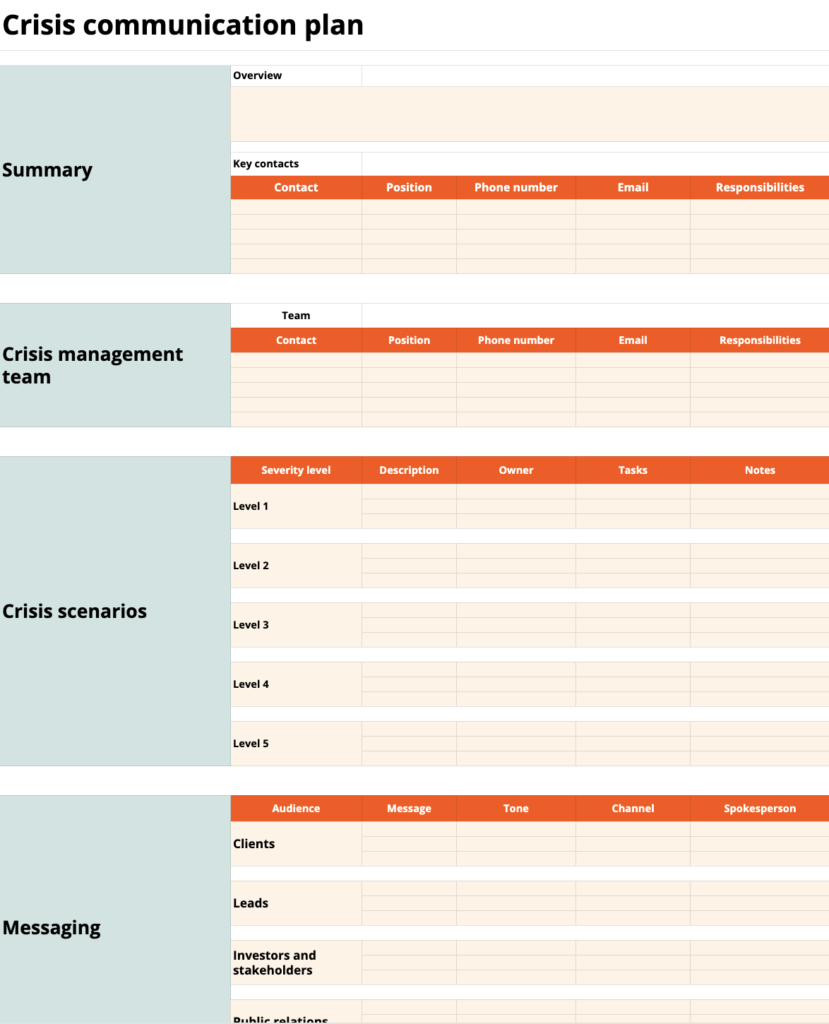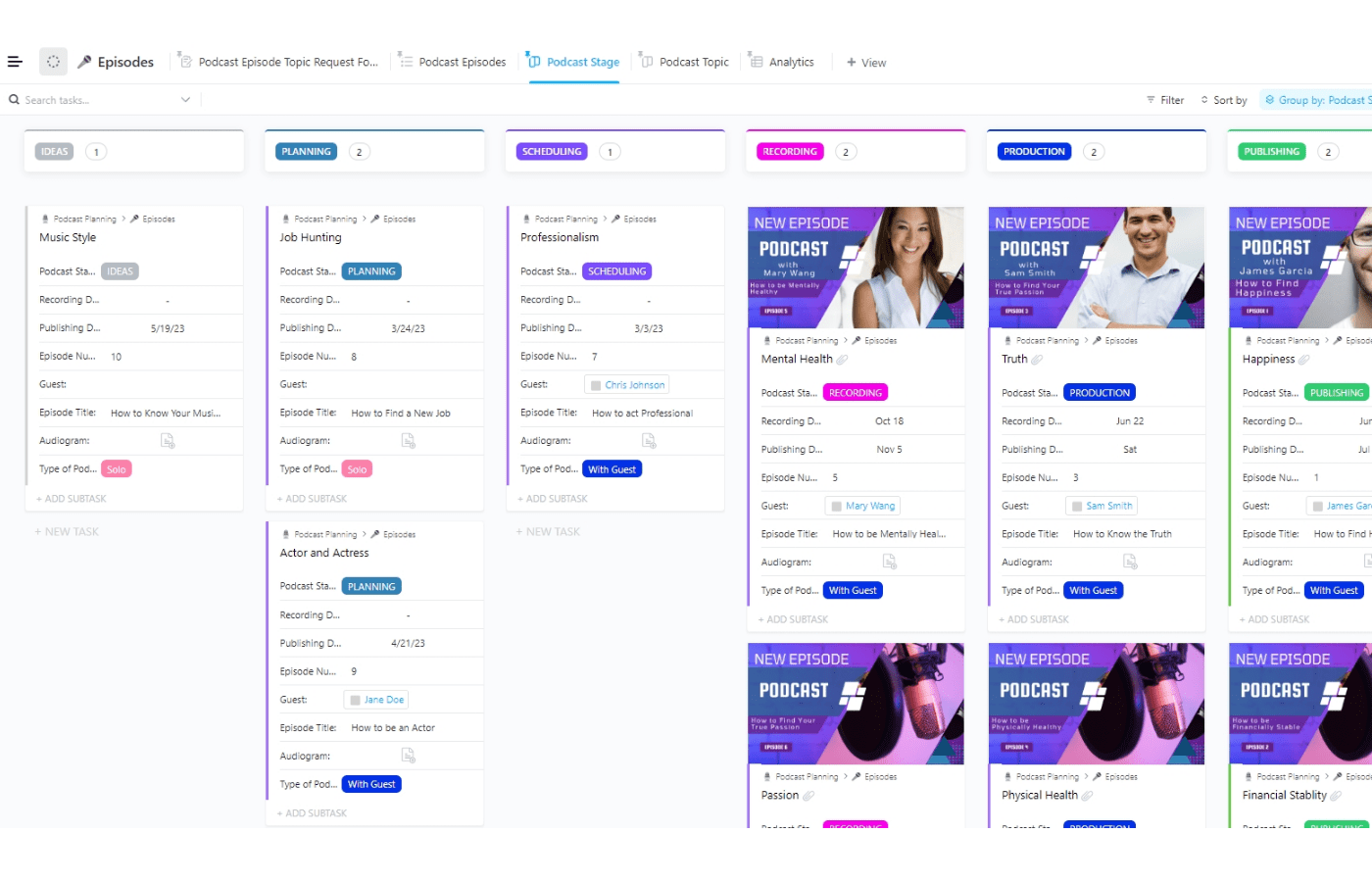Key takeaways
Communication is essential for the success of a project. All involved in a project need to communicate and collaborate so that all the pieces, such as objectives, requirements, tasks, schedules, deliverables, risks, issues, and solutions, fit together to form one successfully delivered project to satisfied stakeholders. Obtaining project stakeholder buy-in early on is key to project success. And one effective way to communicate and manage stakeholder expectations is through a project communication plan.
What is a project management communication plan?
A project management communication plan is a document that is part of the project management plan. It identifies the stakeholders involved in the project, the kind of information they will receive from the project manager, and the method or manner by which they will receive it throughout the course of the project. The plan also defines when each stakeholder will receive the information and how often, as well as how they can provide feedback to the project manager.
READ ALSO: What is Stakeholder Analysis?
Basic elements of a project communication plan
Project managers need everyone involved in the project to be aware of its purpose, status, and performance at any given time, as well as the roles and responsibilities of all participants.
A project communication plan should be tailored to the unique needs of the project, but the document typically contains the following basic elements:
- Target audience: Who are the individuals with an interest in the project, and what are their needs?
- Type of information: What type of information, preferred format, and how detailed should these be?
- Frequency: How often does communication need to take place?
- Owner: Who is the responsible person, aside from the project manager, who will do the communication?
- Channel: What type of channel or technology will the sender use?
- Goal: What is the objective and desired result of the communication?
- Dates and milestones: At which point should progress be communicated to team members and stakeholders?
How to create a project communication plan: A step-by-step guide
The information needed to create a comprehensive project communication plan can be found in other project documents essential to the execution of the project. These include the project plan, business case, project charter, stakeholder register, and the RACI matrix. These documents already outline how the team will execute, monitor, and control the project, making it easy to develop an effective communication plan.
However, there are other actions that the project manager has to take to come up with an effective communication plan.
Determine the types of communication needed for the project
Every project differs in scale, work to be completed, goals, and other requirements, which means they also differ in the types of communication needed. Identify what these are and create a list of them before proceeding to the next step.
Define the objectives of the communication plan
Clearly define the objectives and purpose of the plan. Why is there a need to create one? What is the problem it wants to avoid or address? Let your team know if you’re creating the plan to keep information dissemination smooth-flowing, to build a healthy feedback system, or to ensure prompt action should issues arise.
List all parties with an interest in the project
Identify and list down all relevant stakeholders for the project, the individuals among whom information will be disseminated. Know not just their names but also their roles, interests, level of influence, and communication preferences.
Decide what information to disseminate and how
What do team members and project stakeholders need to know? Define the content of your messages and the people who will receive them. The type of information you will be communicating and the manner in which you will be communicating them will depend on the role of the person on the receiving end.
Common types of information shared during project execution include project status updates, risks, milestones, delays, budget, and deliverables completed, unfinished, or missing. Some of the most commonly preferred communication channels include email, chat, and virtual meetings.
When deciding on what and how to communicate, make sure to take into consideration each person’s preferences.
Set frequency
You may share updates daily, weekly, biweekly, or monthly. There are reports that must be submitted at the end of every day and others that are better sent at the end of the week. To stay organized, try creating a calendar for all the communication activities you need to do.
Define roles and responsibilities
Creating, sending, reviewing, and storing communications is typically the responsibility of the project manager, but there are smaller tasks that need to be done to help the project manager maintain smooth communication throughout the project. Tasks such as minute-taking during meetings and sending invitations, as well as providing scheduled updates to clients, can be delegated to other team members.

Document and distribute
Compile all necessary information regarding communications into an accessible document or repository and share it with team members and stakeholders, both internal and external. Make sure everyone has received and reviewed the plan and gather feedback.
Review the plan regularly and adjust accordingly
Each project has different demands, and these demands change all the time. Revisit your communication plan regularly and assess its effectiveness. If you find that some channels are no longer applicable or certain parts of the plan are no longer working, make the necessary adjustments.
Skills for good communication
You know how the saying goes: sometimes it’s not what you say but how you say it. Knowing how to communicate information is just as important as knowing what to communicate.
Communication skills are vital to project management. It allows project managers to send information clearly to all stakeholders, provide them a voice throughout the process, and get support from them to finish the project successfully.
Here are some tips to be a good communicator:
- Write clearly and concisely: Use simple language that any audience can understand.
- Practice verbal presentation skills: Learn how to present with confidence; this will be useful when running meetings with different stakeholders.
- Listen actively: Take time to hear and absorb what others are saying.
- Welcome feedback: Be open to constructive criticism — it is an effective way to learn lessons.
- See others’ point of view: Try to see things from the point of view of another and have empathy, even if you don’t always agree.
Tools and templates for creating a project communication plan
Project management software solutions offer a faster, more convenient way to create a communication plan. Tools like monday, Asana, and Smartsheet provide users with communication plan templates that you can easily customize and tailor to your project’s specific needs.
monday.com’s project communication plan template
This communication plan template from monday.com enables you to easily add important details, particularly the list of stakeholders, their roles, preferred format and channel of communication, and frequency. There is also an area where you can add the goal for each communication activity so all parties involved are aware of the purpose of each meeting or daily checkins.

Zapier’s crisis communication plan
One of the main purposes of establishing effective communication is to make sure everyone working on the project is aware of the risks that have arisen or may arise over the course of project execution. Zapier’s crisis communication plan template is a great tool for making sure any crisis is made known to everyone. It requires project managers to indicate ways to address crises, including key team members, their responsibilities, and preferred communication channels.

Notion’s communication plan template
This template from Notion is simple but provides just the right layout for outlining objectives and goals of your communication plan. It also has areas for relevant measurements so everyone is aware how the performance of each communication activity is assessed.

Bottom line: The importance of an effective project communication plan
An effective communication plan keeps team members and project stakeholders informed and aligned. It prevents miscommunication that could hamper the project’s chances of meeting its objectives. It is also a way to make sure that everybody interested in the project’s outcome understands its goals, timelines, and the roles each individual plays to ensure the project’s success.
Knowing what, when, and how to communicate strengthens collaboration and facilitates better decision-making. When the right information is delivered to the right people at the right time and in the right way, the quality of decisions and the speed at which they are made will improve.





